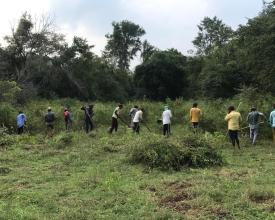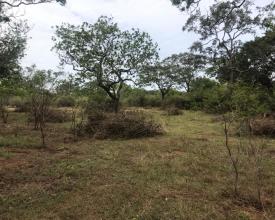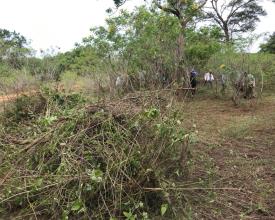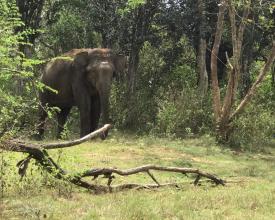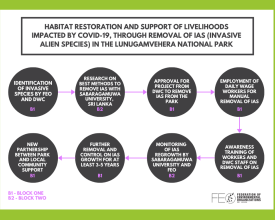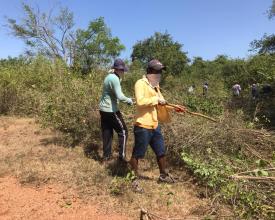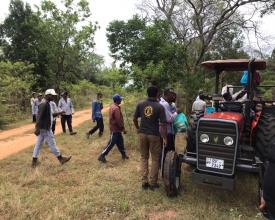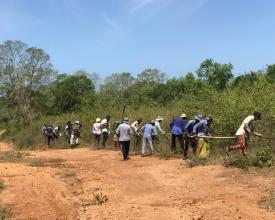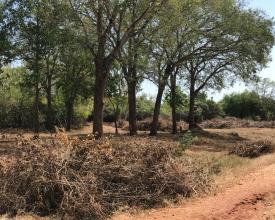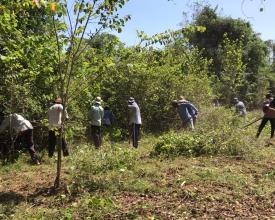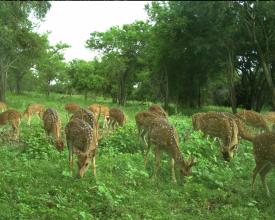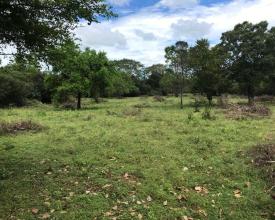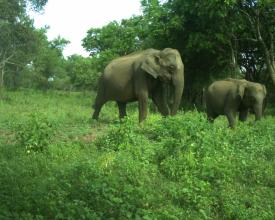
Habitat Restoration and Support of Livelihoods impacted by COVID-19, through Removal of IAS (Invasive Alien Species) in the Lunugamvehera National Park

FEO partnered with the Department of Wildlife Conservation (DWC) for a habitat restoration project by clearing around 500 ha of the Invasive Alien Species (IAS), Agada (Xanthium indicum) in Minneriya and Kaudulla National Parks in 2020. Based on the success of this project, DWC has authorized FEO to undertake a similar project at Lunugamvehera and Uda Walawe National Parks, where a large percentage of the parks are currently impacted by the uncontrolled spread of the IAS, Lantana camara (S. Gandapana) and Eupatorium odoratum (S. Podi singho maran). This project involves clearing over 900ha of these invasives in the Park which is surrounded by communities who have been engaged in tourism involving the national park for a long time & whose livelihoods have been affected by the Covid-19 pandemic. The invasives are cleared using manual labour, allowing native vegetation to be protected and restore grazing grounds for herbivores like Elephants which could de-escalate conflicts between humans and wildlife.
Context
Challenges addressed
Extensive loss of habitat and grazing grounds in the Lunugamvehera National Park pose a serious threat to the elephants and other herbivore populations. The park is also surrounded by several villages, whose communities depend on agriculture for their livelihoods. Lack of food often prompts animals to raid agricultural areas outside the park causing human - animal conflicts, especially the Human-Elephant conflict. This is further escalated by incidents of poaching of wildlife due to lack of income which is widely recorded in the area. This project will financially support the livelihoods of the local communities dependent on the income generated by visitation to the park and those who are daily wage earners who have lost income due to the pandemic.
Location
Process
Summary of the process
In order to conduct the manual removal of the invasive species effectively, research analysing the effectiveness for long-term control of the regrowth of invasive species would be required. The interaction of block one (partnerships with both the government department and local communities) and block two (manual removal of invasives with collaboration with Sabaragamuwa University researchers) was therefore essential in ensuring the best method was used, as well as for future monitoring in order to eliminate invasives in the area and restoration of the habitat for the wildlife that live in the Park.
Building Blocks
Partnerships with Department of Wildlife Conservation and Partnerships with the local community
Federation of Environmental Organisations partnered with the Department of Wildlife Conservation (DWC), the governmental department which oversees maintaince of national parks, nature reserves, and wildlife in wilderness areas in Sri Lanka. Lunugamvehera National Park is directly under their management, therefore granting of permission from the DWC was essential. Removal of the focal invasive plants was conducted under the supervision and security of the DWC.
In addition to our invasive species removal programme, part of the project focuses on developing sustainable livelihoods of the local communities. The hired labour was drawn from local communities who have lost their income sources due to the COVID-19 pandemic from local farming communities, and many of which were daily wage workers. This new partnership between the Park and the local community also fosters an attitudinal shift from one of conflict with the Park to one where they can financially benefit from and being involved in the protection of the Park. Local community members involved in the project were also given awareness training on invasive species control.
Enabling factors
- Past interactions of FEO with DWC and completion of successful projects for the DWC
- Trust gained with the local communities due to providing them with employment over time.
- Willingness to work together with the community to improve their livelihoods.
Lesson learned
- Ensure that you have adequate funding before the commencement of the project in order to ensure continuous employment
- Commence processes to obtain necessary approvals from government agencies like the DWC early on as there can be long delays to obtain them.
Manual removal of invasive plants instead of using heavy machinery
Using manual labour allows for selective removal of invasive plants. This protects the other native vegetation in the area, allowing for the native vegetation and grasses to grow back in the following months whereas when using heavy machinery, the top layer of soil in addition to the grass and native vegetation are removed. Using heavy machinery also removes vital seed banks of native plants, which further facilitates the spread of invasive plants.
It is critical to remove the IAS before the seeds mature and disperse. Through this project, we aim to remove as much IAS growth as possible manually (inclusive of roots), before they shed seeds. The remaining plants, which are more difficult to uproot, will be removed via a ‘slasher’ and the roots will be removed manually, at a later stage, when the soil is moist and plants may be easily uprooted. FEO has observed regrowth of grass after a couple weeks of IAS removal and the growth of native vegetation inhibits the regrowth of invasive species in the cleared areas.
Enabling factors
- Collaboration with Sabaragamuwa University to research on the most effective methods of removal and obtain scientific data on the prevalance, growth, and regeneration of invasive species.
- Previous experience of removal of other invasive species in other National Parks in Sri Lanka.
Lesson learned
- Process of identifying the advantages of using manual removal - has a much higher percentage of regrowth of native species as opposed to using heavy machinery.
- Observed through our camera traps and research that the grass grows back within a few weeks and we have noticed that elephants, deer, and other herbivores are already grazing on cleared areas.
Impacts
Habitat management and invasive removal has positive impacts on both the wildlife and the surrounding community. Rapid response in preventing seed dispersal is critical in controlling the spread of any invasive alien plant species and reduces long-term costs for controlling the spread in national parks in Sri Lanka. Removal of invasive plants allows the regrowth of native plant species and thereby restoring the habitat and grazing grounds for herbivores in the Lunugamvehera National Park. These areas are the primary feeding grounds for herbivore populations (including elephants - an endangered species) that are resident or visit the Park, and thus impact their interconnected ecological food webs. This Project intends to make a positive impact by employing local communities engaged in tourism, agriculture, and others who are daily wage earners who have lost income due to the pandemic. Hence this project would provide them with a steady source of income by employing villagers for the manual removal of the invasive plants. The creation of an alternative livelihood for the local community who became unemployed due to the pandemic through protecting the Park fosters an attitudinal shift from one of conflict to benefiting financially from and being involved in the protection of the Park.
Beneficiaries
- Local communities surrounding the Park
- Department of Wildlife Conservation - a new partnership between the local communities & the DWC for future protection of the Park.
- The plant and wildlife species that are native to Lunugamvehera.
Sustainable Development Goals
Story
Due to the Covid-19 pandemic, daily wage workers across Sri Lanka experienced a drastic fall in income due to the inability to travel to work due to imposed lockdowns. Those working in the tourist industry were faced with the halting of tourists, both local and foreign, and many struggled to make ends meet due to the loss of their livelihood. The Federation of Environmental Organisations (FEO) recognised this and with approval from the Department of Wildlife Conservation, launched this project - currently employing 30 members of the local community who lost livelihoods due to the pandemic (this number will be increased to 80 members with additional funding).
With the income generated from this project, workers are now able to support not only their families, but families of others in their community by contributing to the payment of internet connections for online learning to aiding tuition payments for children of parents who have no income currently. Moreover, due to the pandemic, the costs of living have increased, therefore provision of income through this new livelihood has had a positive multiplier effect for the local communities as well.
This project is a 'win-win' for both the environment and people and is one of the few instances where both parties are able to benefit, instead of being in conflict. Due to the insufficient income, some members of local communities surrounding these Parks have been noted to engage in poaching of wildlife as well. Currently, more than 10% of available grassland and scrub jungle is occupied with invasives and if left uncleared, this number will increase drastically over the years - significantly reducing food available for herbivores. Many of the local community who live close to the Park also depend on agricultural livelihoods and therefore when animals like Elephants search for food in agricultural lands, the potential for conflict increases. Our aim is to virtually eradicate invasive plants in the park and bring it back to it's natural habitat within 3-5 years, restoring grazing grounds for herbivores that can potentially contribute to the reduction of conflict between humans and wildlife in the future.
